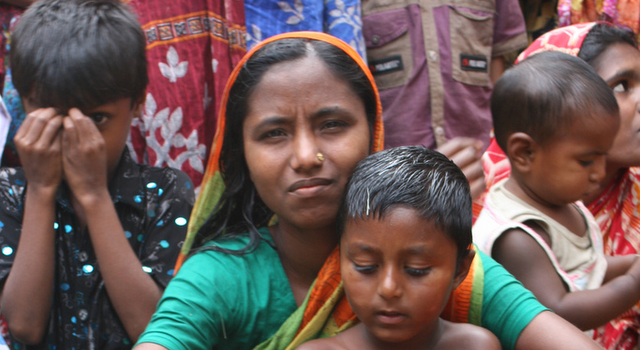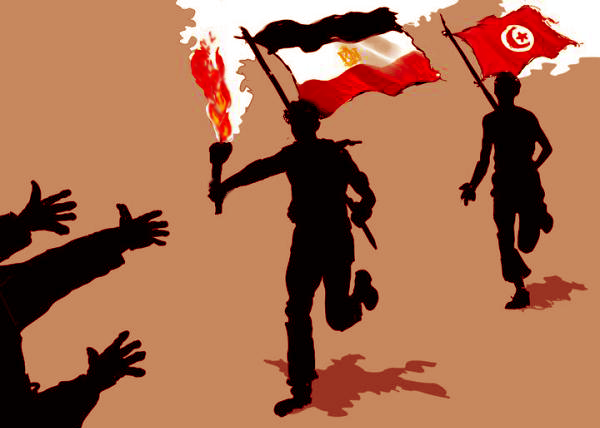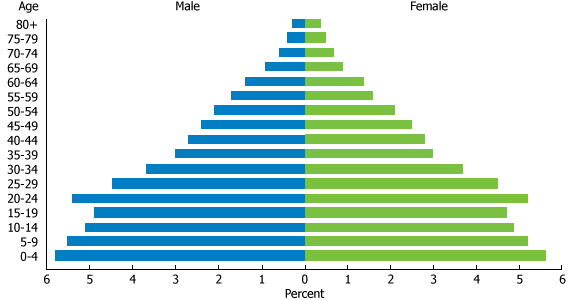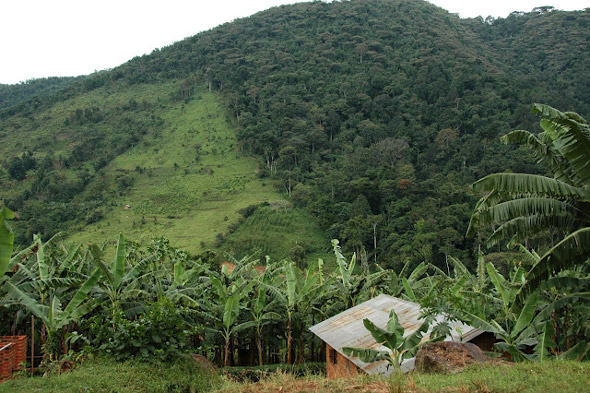-
USAID: Maternal Deaths in Bangladesh Decline by 40 Percent in Less Than 10 Years
›The original version of this article, by the USAID Global Health Bureau, appeared on the USAID Impact blog.
Bangladesh is on track to meet the 2015 deadline for UN Millennium Development Goal 5 (50 percent reduction in maternal deaths). The Bangladesh Maternal Mortality and Health Service Survey, jointly funded by the Government of Bangladesh, USAID, Australian Aid (AusAID) and the United Nations Population Fund (UNFPA), found that maternal deaths in Bangladesh fell from 322 per 100,000 in 2001 to 194 in 2010, a 40 percent decline in 9 years.
The decline in direct obstetric deaths is most likely the consequence of better care seeking practices and improved access to and use of higher-level referral care. The decline in total fertility rate due to the successful family planning program has reduced exposure to high risk pregnancies and has thus prevented a large number of maternal deaths.
Continue reading on USAID’s Impact blog.
Sources: Directorate General of Health Services – Bangladesh, UN.
Photo Credit: Adapted from “Mother & Son,” courtesy of flickr user Anduze traveller. -
Hu Angang and Liang Jiaochen, ChinaDialogue
China’s Green Five-Year Plan: Making “Ecological Security” a National Strategy
›March 16, 2011 // By Wilson Center StaffThe original version of this article, by Hu Angang and Liang Jiaochen, appeared on ChinaDialogue.
Five-year plans (FYPs), which set down and clarify national strategy, are one of China’s most important policy tools. Just as they have helped to drive China’s economic success over recent decades, so they will play a pivotal role in putting the country on a green development path. The 12th Five-Year Plan, now under consideration by the National People’s Congress, marks the beginning of that process in earnest (Editor’s note: Since this was originally published, the National People’s Congress voted in favor of the plan).
FYPs embody the concept of progressing by degrees, or developing step by step. This approach has been one of the driving forces behind China’s economic progress in recent decades and will now provide the platform for its green development. It is the methodology underpinning China’s socialist modernization: to reach a new step in development every five years. Unstinting efforts over a number of FYPs have driven China’s transformation.
Climate change presents a long-term and all-encompassing challenge for China. It demands a long-term development strategy and broad goals, as well as near-term action plans and concrete policies. Combining these is precisely the idea behind FYPs.
At the global climate change summit in Copenhagen in 2009, China demonstrated it has the long-term political will to respond to climate change; to work with the world to limit global temperatures to no more than two degrees Celsius above pre-industrial temperatures (the goal set out in the Copenhagen Accord). In November that year, the Chinese government formally put forward its medium-term targets on climate change: a reduction in energy intensity of 40 percent to 45 percent on 2005 levels by 2020, and generation of 15 percent of energy from non-fossil fuel sources by the same date.
Continue reading on ChinaDialogue.
Hu Angang is a professor at the Chinese Academy of Sciences and Tsinghua University and the director of the Centre for China Study. He has worked as the chief editor for China Studies Report, a circulated reference for senior officials. Liang Jiaochen is a PhD student at Tsinghua University’s School of Public Policy and Management.
Sources: Business Green, UN Framework Convention on Climate Change, World Resources Institute.
Photo Credit: Adapted from “China: CREME,” courtesy of flickr user IFC Infrastructure (Alejandro Perez/IFC). -
Shannon Beebe, Los Angeles Times
Somali Piracy Shows How an Environmental Issue Can Evolve Into a Security Crisis
›March 14, 2011 // By Wilson Center Staff
It has become apparent that real piracy is far different from the lighthearted subject sometimes portrayed in popular culture, and the problem is growing much worse. Besides the tragic cost in lives, the United States, many other nations, and NATO spent roughly $2 billion combined last year to safeguard the busy international sea lanes off the Horn of Africa from Somali pirates. According to the International Maritime Bureau, “hijackings off the coast of Somalia accounted for 92 percent of all ship seizures last year,” and the price tag does not include the costs of reallocating critical military resources.
-
Carla Koppell and Haleh Esfandiari
Make Sure Women Can Lead in the Middle East
›In Libya, Egypt, Bahrain, Yemen, Tunisia, and elsewhere, women have stood with men pushing for change. In Libya, Iman and Salwa Bagaighif are helping lead, shape, and support protesters. And in Egypt, the Egyptian Organization for Human Rights, one of the oldest and most well-known non-governmental organizations in Egypt, estimated that at least 20 percent of the protesters were women.
For example, the 26-year-old co-founder of Egypt’s April 6 Youth Movement, Asmaa Mahfouz, mobilized thousands of youth in support of the protest through her impassioned YouTube video. In Yemen, a 32-year-old mother of three, Tawakkul Karman, helped organize protests against the current government.
History of Frustration
Yet women’s leadership is not a new phenomenon. In Iran, women have for many years successfully pushed for greater freedom in personal status law and greater employment and educational opportunities. Many Iranian women have been imprisoned simply for endorsing the Million Signature Campaign, which seeks equal rights and the repeal of laws that discriminate against women.
Women have been using social media and leveraged communications technology to pursue greater social and political openness since before the arrival of Iranian President Mahmoud Ahmadinejad. Notwithstanding a rich history of non-violent activism and extraordinary leadership, women have rarely been involved in political decision-making in the Middle East and North Africa region.
At an even more basic level, women do not feel confident that their rights will be preserved under the systems emerging from recent political transformations.
In Iraq, there have been female judges since the 1950s and thus many of women’s rights have been protected since 1978 by a personal status law. Yet in 2003, the new Iraqi Governing Council sought to strip women of these rights. Only in the face of domestic petitions, letter writing, and face-to-face advocacy were women successful in ensuring their rights were preserved. Iraqi women continue to face efforts to reduce their freedoms and each time they have defeated the assault.
Already Egyptian women are risking similar marginalization. There are no women on the committee revising the constitution. In an almost uncanny parallel to the struggle of Iraqi women after former President Saddam Hussein, Egyptians have drafted a petition, endorsed by over 60 local organizations, decrying women’s absence from transitional political bodies.
Bias embedded in the new draft constitution suggests that these concerns may be real.
“Prerequisite for an Arab Renaissance”
The international community and the new generation of progressive, democracy-minded leaders in the Middle East need to see women as critical partners for change. The evidence is indisputable. The 2005 UN Arab Human Development Report cautions that under-employment and under-investment in women severely drains overall well-being and concludes that “the rise of women is in fact a prerequisite for an Arab renaissance, inseparably and causally linked to the fate of the Arab world.”
The world has an unprecedented opportunity to transform nations held down for decades by oppressive regimes. We must make sure that this opportunity is open to all citizens, including women.
Women’s role must be honored in the struggle and protected against the fundamentalist push. Most importantly, their involvement will be key to enabling pluralistic, economically thriving societies to emerge in a region where progress has been stalled for generations.
The window is small but the time is now and the opportunity is enormous. As we celebrate the 100th anniversary of International Women’s Day, let’s remember how critical advancing the status of women will be to success.
Carla Koppell is director of The Institute for Inclusive Security. Haleh Esfandiari is director of the Wilson Center’s Middle East Program. This article was originally written for the Common Ground News Service.
Sources: UN Development Programme, Women Living Under Muslim Laws.
Photo Credit: Adapted from “Just Passing Through,” courtesy of flickr user Alexbip. -
Of Revolutions, Regime Change, and State Collapse in the Arab World
›The original version of this article, by David Ottaway and Marina Ottaway, was published by the Wilson Center’s Middle East Program.
With breath-taking speed, massive popular protests across the Arab world have swept away two Arab strongmen and shaken half a dozen monarchies and republics to their core. But the Arab world has yet to witness any fundamental change in ruling elites and even less in the nature of governance.
Libya now seems poised to be the first country to see a true change in governance, thanks to Muammar Qaddafi’s megalomania and his amorphous jamahiriya (state of the masses). But such change may not have a happy ending. The damage Qaddafi has inflicted on his country is likely to extend well past his demise because he leaves behind a weak state without functioning institutions.
The uprisings sweeping across the Middle East have similar causes and share certain conditions: authoritarian and ossified regimes, economic hardship, growing contrast between great wealth and dire poverty, all worsened by the extraordinarily large number of young people who demand a better future. But the consequences will not be the same everywhere.
Tunisia and Egypt: A System Still in Place
Pro-democracy protesters in Tunisia and Egypt have been quick to use the word “revolution” to describe their astounding achievement in forcing Presidents Zine el Abidine Ben Ali and Hosni Mubarak from power after decades of rule. Tunisia’s “Jasmine Revolution” and Egypt’s “January 25 Revolution” have certainly injected the long-silenced voice of the people into the autocratic politics of the region. But they have not brought to the fore a new ruling class, system of governance, or the profound social and economic changes associated with the classical meaning of revolution. And it remains to be seen whether they will succeed in doing so.
Continue reading at the Wilson Center’s Middle East Program.
Photo Credit: Adapted from “Libya-protests_025,” courtesy of flickr user Crethi Plethi. -
Youth Revolt in Egypt: A Country at the Turning Point
›March 2, 2011 // By Wilson Center StaffThe original version of this article, by Farzaneh Roudi-Fahimi, Shereen El Feki, and Tyjen Tsai, appeared at the Population Reference Bureau.
Egyptians know some dates by heart: July 26, 1952, marks the overthrow of Egypt’s last monarch; October 6, 1973, is the date of the country’s attack to reclaim the Sinai Peninsula. Now another date can be added to that list: January 25, 2011, the first day of anti-government protests that led to President Hosni Mubarak’s resignation 18 days later. Mubarak ruled Egypt for nearly 30 years, during which the country’s population grew by 90 percent – from 45 million to 85 million according to UN estimates, despite concerted government campaigns to slow population growth. The demographic strength of Egypt is undeniable, not just in absolute numbers but in its age distribution. Egypt is experiencing a “youth bulge:” One in five Egyptians is between ages 15 and 24, and one-half of the population is below age 25 (see figure above), a powerful engine of renewal for the country.
Youth as the Drivers of Change
Egyptians of all ages and walks of life participated in the protests, unified in aspirations and demands including political freedom, better wages, and better working conditions. But it was the astonishing numbers of young people participating in demonstrations that gave the uprising its momentum, and were key to sustaining it, as hundreds of thousands gathered in Tahrir (Liberation) Square in Cairo and other cities across the country. Egypt’s youth are the faces behind this leaderless revolution; the revolt, in large part, was spurred by their finesse in using social media to organize and make their voices heard.
Young people arguably have the most at stake in the outcome of this revolution. The results have immediate impact and future implications in how they construct their lives. Recent studies show the frustrations young Egyptians feel at the stagnancy of their lives. They are a generation waiting for better access to quality education, secure employment, and the financial stability necessary to get married and start their own families.
Continue reading at the Population Reference Bureau.
Sources: UN Population Division.
Image Credit: Population pyramid from PRB, data from the UN Population Division. -
Sam Rugaba, PHE Champion
Encouraging Childhood Education and Birth Spacing as an Approach to Conservation
›This PHE Champion profile was produced by the BALANCED Project.
Fifty-one-year-old Sam Rugaba is a dedicated teacher who loves his job at the Bujengwe Community Primary School. The school is the result of a community-based project located in the Bujengwe Parish of the Kayonza subcounty in the Kanungu district of Uganda – just 18 kilometers from the Bwindi Impenetrable National Park (BINP). The biodiversity-rich BINP is home to many rare species including the endangered mountain gorilla. Sam is also a Conservation Through Public Health(CTPH) community volunteer and community conservation health worker. -
‘Dialogue’ Interviews International Reporting Project Fellows on Liberia
›Since 1998, the International Reporting Project has been a pioneer in the “non-profit journalism” movement that seeks to fill the gap left by much of the mainstream media’s reduction in international news coverage. IRP has provided opportunities to more than 300 U.S. journalists to travel to more than 85 countries to produce award-winning reports. This month on the Wilson Center’s Dialogue program, host John Milewski speaks with guests Sunni Khalid, Ed Robbins, and Teresa Wiltz. They recently participated in an intensive fact-finding visit to Liberia under the auspices of the International Reporting Project where they produced stories on the country’s ongoing development and women’s empowerment efforts (among other topics).
Sunni Khalid is managing news editor for WYPR in Baltimore, Maryland. Previously, he worked for Time, The Washington Times, USA Today, Voice of America, and NPR.
Ed Robbins is an independent, multi-award winning director, writer, producer, and videographer. Outlets for his work have included PBS, The Discovery Channel, National Geographic Channel, ABC, and the BBC.
Teresa Wiltz is a senior editor for The Root, where she helps oversee the production of the African-American web-magazine. She previously served as a staff writer for The Washington Post’s style section.
The full 30 minute interview is available at the Wilson Center.
To hear more about their projects, see The New Security Beat’s “A Lens Into Liberia: Experiences from IRP Gatekeepers.”
Showing posts by Wilson Center Staff.











